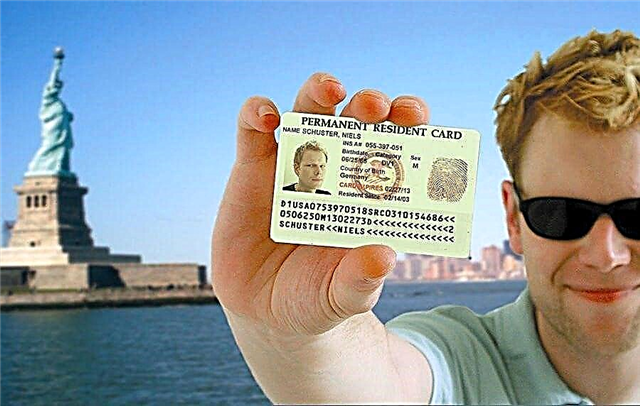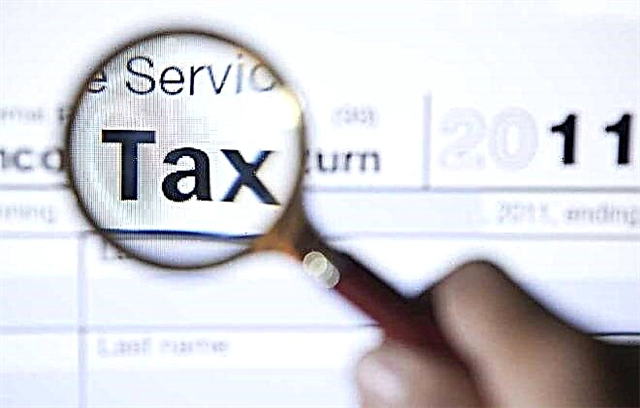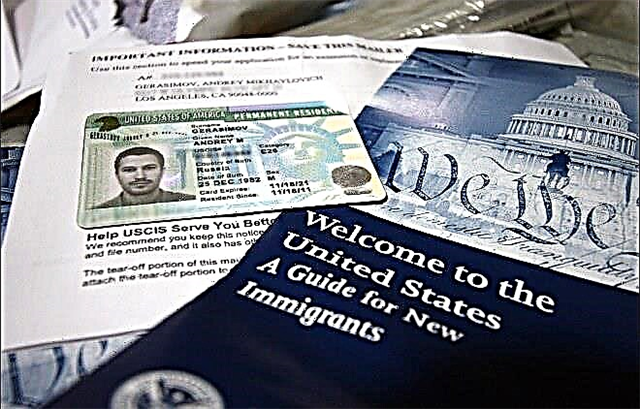Moving to Estonia is associated not only with the difficulties of changing your place of residence. A dissimilar mentality and a language that is difficult to learn can become an insurmountable obstacle for many migrants from Russia. At the same time, taxes in Estonia, the system of their collection and control over payers are so simple that this has provided the country with a high place in the ranking of countries with a favorable business climate.
Estonian tax authorities
State taxes in Estonia are administered by the Tax and Customs Board (Maksu- ja Tolliamet). The responsibilities of the department include:
- work to improve collection of contributions;
- prevention of cases of involving citizens in shadow tax evasion schemes;
- development of new legislative norms, as well as the introduction of services and mechanisms that facilitate the conduct of entrepreneurial activity;
- maintaining a register of taxpayers (Maksukohustuslaste register) and employed persons (Töötamise register).
At the local level, urban or rural self-government bodies are responsible for monitoring and collecting contributions to the budget.
The efficient performance of its duties at every level gives Estonia a high place in the ranking of ease of doing business. In 2021, the country entered the top 20 for this indicator.
To date, the procedure for submitting reports takes no more than 5 minutes for an ordinary payer, and you can send a declaration and pay an obligation remotely, through your personal account of the E-MTA self-service system.
Fundamentals of the Estonian tax system
The Taxation Act (Maksukorralduse seadus) defines which taxes in Estonia are the main state obligations for citizens and organizations working in the country:
- income - tulumaks;
- social - sotsiaalmaks;
- land - maamaks;
- for gambling - hasartmängumaks;
- VAT - käibemaks;
- customs duty - tollimaks;
- excise taxes - aktsiisid;
- contribution for heavy vehicles - raskeveokimaks;
- for the profit of legal entities - ettevõtlustulu maks.
Estonian citizens and resident organizations report and pay taxes on their own. Non-residents will need to enlist the support of a licensed tax representative.

A list of licensed persons can be found on the website of the Tax and Customs Board.
Taxation of income of individuals
The principles of personal income taxation are set out in the Income Tax Law (Tulumaksuseadus). The scale of personal income tax rates in the country is flat, but there is a division of tariffs by type of income.
| Bet size | Income type |
|---|---|
| 20% (standard) | Salaries of employees and other income for which lower rates are not provided |
| 0.1 | Unemployment insurance benefits |
| 0.07 | Withheld from the amount of dividends accrued to an individual |
A lower rate - 7% - is provided for the payment of dividends to an individual, if before that a rate of 14% was applied to them. In practice, this means that distributed dividends are taxed twice: an additional charge of 14% at the stage of distribution and withholding of 7% at the stage of issuing to an individual.
For example, if the co-founder of the company is entitled to 1,000 euros of dividend payments, 162.79 euros must be paid to the budget at the expense of the enterprise (1000 × 14/86) and 70 euros at the expense of the recipient (1000 * 7%). The founder receives 930 euros "clean" in his hands.
Since 2021, a unified approach has begun to operate in the country to determine the non-taxable part of annual income. The maximum amount of the exempt part is EUR 6,000, provided that the annual earnings do not exceed EUR 14,400.
| Range, euros per year | Formula for determining the non-taxable part | Exemption amount |
|---|---|---|
| Up to 14 400 | 6,000 euros per year or 500 euros per month | |
| From 14 400 to 25 200 | 6,000 - 6,000/10 800 * (actual amount of income - 14,400) | From 0 to 6,000 euros. For example, with an annual salary of 20,000 euros the non-taxable part will be equal to 3 111 (6 000 – 6 000/10 800*5 600) |
| Over 25,200 | There is no non-taxable part, personal income tax is calculated from the entire amount | |
The annual amount of earned funds, and, accordingly, the income tax in Estonia can be reduced by additional deductions:
- social insurance contributions in case of unemployment and the mandatory funded part of the pension paid by non-entrepreneur citizens are excluded from the taxable base;
- if the family has children, then personal income tax is not subject to another 1,848 euros for each child, starting with the second;
- interest on a home loan can be deducted from the base - up to 300 euros per year;
- training costs and donations - up to 1,200 euros per year.
In addition to income, the following is paid from the salary of employees:
- social tax - 33% of accrued earnings (before personal income tax withholding), at the expense of the employer;
- unemployment insurance premium - 0.8% of salary at the expense of the employer and 1.6% - withholding at the expense of the employee.
For simplicity of calculation, you can use the online calculator for determining the "net" salary and the amount of insurance premiums.
Profit taxation rules for organizations
One of the most attractive factors of doing business in Estonia is that the profits of companies operating in the country are taxed upon distribution. This means that the company pays income tax in Estonia not on the accrued amounts derived from the accounting data, but on the dividends paid to the co-founders.
The tax rate is determined in the Law “On Income Tax”. From January 1, 2021, its size has been reduced from 20% (or 20/80 of the net amount) to 14% (or 14/86 of the net amount paid), provided that dividends are paid on a regular basis for at least 3 consecutive years ...
In practice, the legislator proposes to use the following scheme:
- in 2021, a rate of 14% will be applied to an amount equal to 1/3 paid in 2021, the remainder is taxed at a rate of 20/80;
- in 2021, this limit will be increased to 1/3 of the total amount paid in 2021 and 2021;
- a full transition to a reduced rate is possible from 2021 (however, the amount of payments should not exceed the average for the last 3 years).
The duty of withholding and transferring tax to the budget rests with the source - the company that pays the funds. Part of the company's profits that are received in the form of dividends from participation in another business is exempt from taxation.
There is also no separate capital gains tax in the country. All transactions for the disposal of valuable property or intangible assets, as a result of which the former owner received financial benefits, are regarded as regular sales with receipt of corporate profits.
The positive result of the transaction is taxed according to the rules of the Law “On Income Tax” (in the part concerning the distribution of dividends).
Value added tax
The rules for the accounting and payment of value added tax are set out in the VAT Act (Käibemaksuseadus). Most transactions are taxed at a basic rate of 20%.
A reduced rate of 9% applies only to the sale of:
- books and teaching aids;
- medicines and sanitary and hygienic products for the disabled;
- periodicals, if they do not contain advertising or entertainment content for adults;
- services for the temporary accommodation of persons.
The zero rate applies to goods exported outside the customs territory of Estonia, transit operations, sales of goods and services provided to passengers of foreign ships and aircraft.
VAT exempt:
- universal postal services;
- medical services related to the use of blood and its components, the provision of breast milk, as well as transplantation of human organs and tissues;
- services of professional dentists;
- the work of social services organized by the municipality;
- basic vocational, secondary and higher education;
- transportation of sick, injured and disabled people;
- insurance services;
- rental and leasing of real estate;
- sale of lottery tickets and organization of gambling;
- investment gold turnover.
Mandatory registration as a VAT payer is provided for business entities whose taxable turnover at the beginning of the calendar year exceeded 40,000 euros.
A foreign company selling goods or services to an Estonian consumer remotely is not obliged to pay and report VAT. An exception is provided only for those who sell excisable products. In this case, tax representatives assume the responsibility for transferring the fiscal obligation.
Other liabilities
Unlike most European countries, Estonia does not levy real estate tax. However, when making transactions for the purchase or alienation of property, you will have to pay stamp duty in the amount of up to 0.04% of the transaction amount. Formally, only those owners of real estate who own land plots replenish the budget.
Land tax must be paid by owners, permanent users and developers of the territories allocated to them. Obligation rates are approved at the municipal level and are in the range of 0.1–2.5% of the cost of land taxation (tariffs current for 2021, broken down by region, can be found on the website of the tax department).
Only the part of the plot located under the residential building (from 0.15 to 2 hectares) is exempt from taxation. But only on condition that this building is the place of official registration of the owner of the land. The basis for levying a fiscal obligation is the Land Tax Act in Estonia.
Some obligations apply only to certain territories. For example, Tallinn advertising fee. From 2021, it is charged daily at the rate of € 0.55 per square meter of advertising space per day. Payment is made in advance, on the first day of the selected reporting period; at the discretion of the payer, it can be a week, month, quarter or year.
In addition, local administrations can set their own fees:
- for the use and pollution of the environment;
- to close roads and streets;
- on a power-driven vehicle;
- for entertainment;
- for the maintenance of animals;
- for parking.
Take a sociological survey!
[yop_poll id = ”14 ″]
Countering tax fraud
Tax evasion is not encouraged in any country. Estonia works in several directions at once:
- penalties - for those who neglect the obligation to declare and pay taxes on time (0.06% of the unpaid amount of the fiscal obligation per day);
- disclosure and re-qualification of fictitious transactions that distort the essence of the operation in order to obtain tax relief or understate the amount of budget payments;
- transfer pricing - the ratio of the value of transactions between related parties with “regular prices” in the market.
The Tax Department constantly urges payers to be vigilant on their own when choosing partners.
To help businesses and ordinary citizens, from October 2021, the electronic service "Tax Behavior Assessment" (e-MTA website) is launched, which will give an idea of the availability of VAT registration, valid licenses, outstanding debts and other indicators that form an idea of the financial solvency of the counterparty.
In addition, Estonia uses the so-called white lists of countries that can be dealt with without fear of falling into a fraudulent scheme. These include jurisdictions that the Estonian authorities do not consider offshore or provide preferential tax treatment. The rest of the countries are blacklisted.
Interstate tax agreements
The tax residents of the country are obliged to obey all the tax rules of the Republic of Estonia. Natural persons who have lived in Estonia for 183 days or more are recognized as such. Enterprises receive resident status on the condition that they register their permanent establishment in the republic.
To improve interaction with tax authorities in other countries, Estonia concludes agreements on the avoidance of double taxation of income and assets, as well as on the exchange of fiscal information. An alphabetical list of the signatory countries is available on the website of the Tax and Customs Board.
Reporting of organizations and entrepreneurs
In accordance with the Accounting Act in Estonia, all companies are obliged to regularly submit a report on the results of the financial year. It must be submitted to the registration authorities of business entities within the first 6 months after the end of the reporting period.
In most cases, it lasts 12 months (from January 1 to December 31), however, legislation makes it possible to fix in the charter other dates for the beginning and end of the financial year.
The annual accounting report is a document that discloses complete and reliable data on the financial condition of an organization. The main components of financial statements:
- balance (expanded or short);
- profit or loss statement;
- cash flow statement;
- data on changes in the value of own assets.
Depending on the size of the enterprise, the composition of the annual accounts will change.
| Categories of enterprises | Reporting composition |
|---|---|
| Micro-enterprise (the amount of assets does not exceed 175,000 euros, and the annual revenue does not exceed 50,000 euros) | He can only draw up an abbreviated balance sheet and a profit statement; he does not need to disclose information about economic activities. The maximum number of attachments should not exceed 3 documents |
| Small business. It is recognized as such if one of the following conditions is met: total assets of more than 4 million euros; annual revenue of more than 8 million euros; the average number of employees is more than 50 people | Are obliged to draw up a detailed balance sheet and an activity report. Maximum number of applications - 9 |
| Average company. It is recognized as such if one of the following conditions is met: total assets of more than 20 million euros; annual revenue of more than 40 million euros; the average number of employees is more than 250 people | Complete reporting in accordance with Estonian or international accounting standards. On average, a package of documents consists of 4 mandatory reports and 15 attachments |
| Large corporation. It is recognized as such if at least two of the conditions are met: total assets of more than 20 million euros; annual revenue of more than 40 million euros; the average number of employees is more than 250 people |
An auditor's report must be attached to the annual accounts. According to the Law “On the Activities of an Auditor”, such a check is mandatory if:
- at least two of the conditions are true: revenue is more than 4 million euros per year, assets on the balance sheet are more than 2 million euros, the number of hired personnel is more than 50 people;
- or at least one of the conditions: sales revenue - more than 12 million euros per year, assets - more than 6 million euros, the number of employees is more than 180 people.
Tax reports must be submitted by both legal entities and private individuals. Citizens, depending on the circumstances, must annually:
- Submit a Form A income tax return (from February 15 to April 1 annually). It is submitted by entrepreneurs, recipients of income from abroad, persons wishing to receive a tax refund or offset previously incurred losses.
- Pay land tax (by July 15th).
- Pay vehicle dues (before October 1).
Entrepreneurs must annually submit a Form E commercial income tax return to the tax authorities.
Conclusion
Membership in the European Union imposes certain obligations on the Republic of Estonia in the field of taxation and information exchange.However, the country managed to maintain a low level of tax rates, simple and convenient ways of interacting with fiscal authorities, combining them with effective methods of control over the implementation of legislation.










